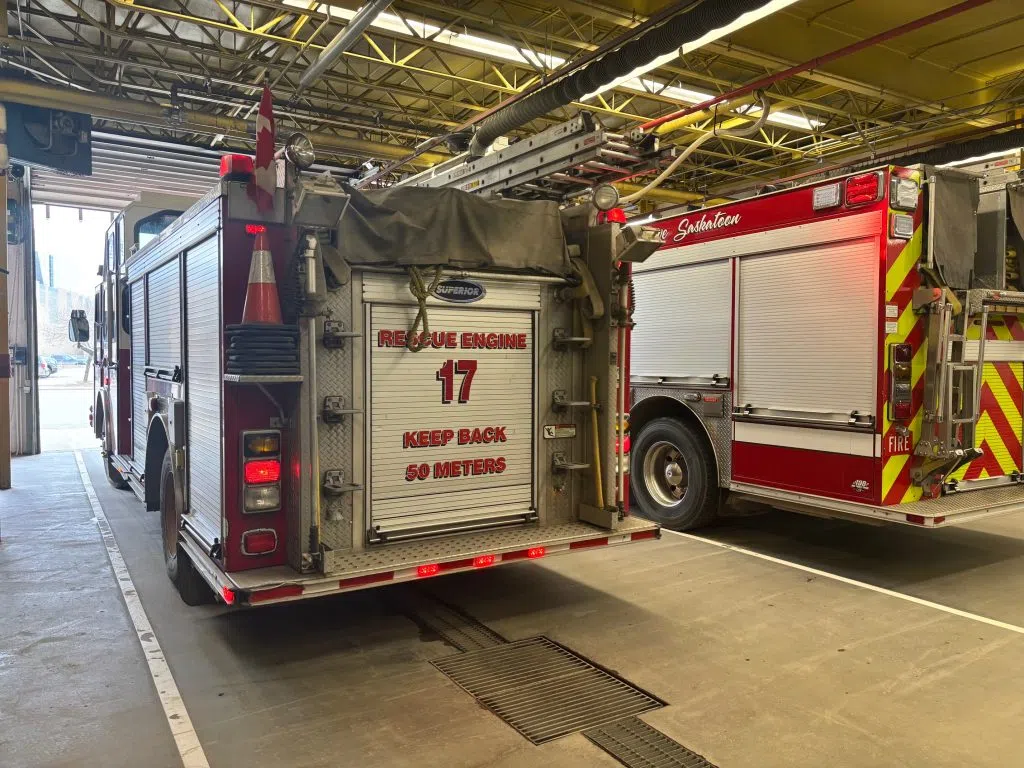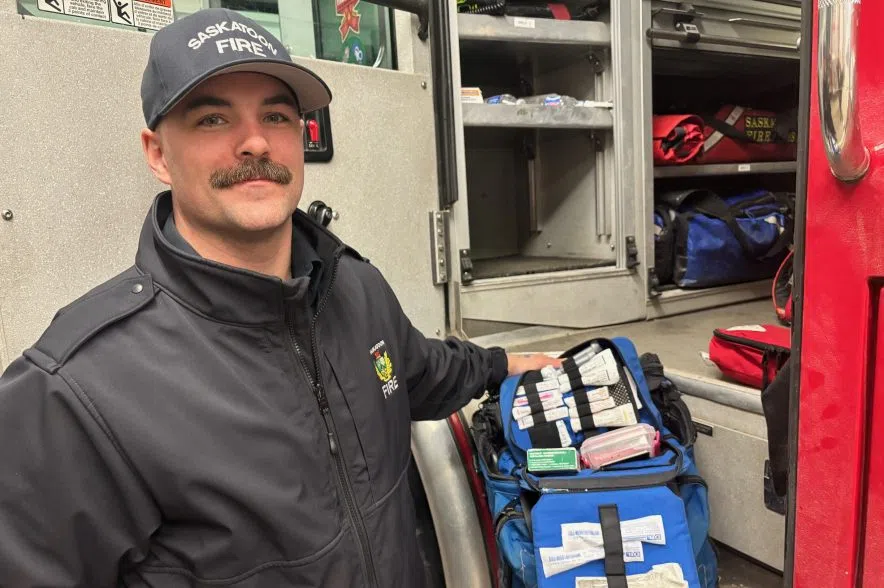A “normal” shift at Fire Hall Number One in downtown Saskatoon, used to mean responding to between five and 10 overdose calls.
Over the last six weeks or so, firefighter Jayden Poirier said that number’s jumped to anywhere between 15 and 20 overdoses per shift.
According to the latest statistics from the Saskatoon Fire Department, since February 25, crews have responded to at least 300 overdose calls, as well as multiple suspicious deaths.
Several alerts have also been issued by Prairie Harm Reduction and from the Ministry of Health.
Because of the drug situation happening in Saskatoon right now, the Saskatchewan Government has had to open a Provincial Emergency Operations Centre – which will allow government ministries and organizations to help respond to all the overdose calls.
As the busiest fire hall in the city, Poirier, who’s also the International Association of Firefighters (IAFF) Local 80 union representative, said the huge spike in overdose calls is leading to burnout.
“We’re seeing firefighters with emotional exhaustion, compassion fatigue and loss of empathy. These are all feelings of burnout or leading toward burnout,” he said.

A Saskatoon fire truck leaves Fire Hall Number One on a suspected overdose call (Lara Fominoff/650 CKOM)
On any given shift, firefighters are going from homes to businesses, to streets, parking lots and everywhere in between.
“When we show up there’s usually a group of people flagging us down that have either found this individual or they’re with them when this happened.
“A lot of times these scenes are a risk to personal safety, whether it just be the state of the area; dirty, not well-kept conditions. We have to look out for discarded needles. We also have to look out for foreign substances like white powders and the drugs that could be there that could be a risk to first responders,” he described.
They’re also preparing themselves for aggression and hostility when some users are brought back from the brink of death.
“People are waking up from these overdoses and being openly hostile and aggressive towards the first responders, and it’s really challenging because you’re trying to help these people,” he said.
Many times he said there is a large group of people surrounding the person overdosing, wondering why they aren’t “waking up” faster.
“All these people yelling at you, ‘Wake him up, wake him up. What are you guys doing, hurry up!’ It can be a lot, and it just adds to the toll,” he said.
It’s also not uncommon for some people who are overdosing to still have hospital wristbands from a previous overdose and treatment hours earlier.
“It feels like a systemic failure when we are seeing the repeat people over and over again,” he said.
Poirier said it’s not uncommon for most, if not all of the trucks at the Number One fire hall to be out on overdose calls. And because ambulances must transport patients to hospitals, firefighters have to remain at the scene until an ambulance arrives to take over care of the patient.
He fears that calls could be lost, or delayed if the call volume continues the way it has been for the last several weeks.
“There will be times when we’ll be here, and a truck from the north end, or further on the west side is screaming into downtown to do calls that we can’t get to,” he explained.
Supporting other firefighters, and watching out for one another is something Poirier said the teams are doing. He said sometimes it can be difficult for an individual to recognize when they’re burnt out.
“When I get to work, or when I’m on shift and I’m sitting beside the guy in the next seat, the firefighter… We’re paying attention to each other, we’re checking in on each other,” Poirier said.
“If I’m noticing things, I’m making sure that individual’s taking time to seek help.”
However, he said the trend over the last several weeks is troubling.
“It’s the new normal, and it’s not OK.”
Paramedics also frustrated and exhausted
Kyle Sereda, general manager for Medavie Health Services in Saskatoon, said while there have been spikes in overdose calls in the past, he’s never seen anything like what’s been happening in the past few weeks.
“Not to this level. I certainly don’t recall a period of time where we saw such a spike,” he said.
“Depending on how long this is sustained, (it) just compounds our challenges in responding to it.”
Paramedics are also becoming frustrated and exhausted, especially as they attend calls with multiple overdoses – something akin to what they would normally consider a mass-casualty situation.
“Just this week we had one paramedic crew experience walking into a location and there were five people all experiencing the overdose, with only two paramedics,” Sereda said.
“Naturally, we activate other resources in that situation, ’cause that wasn’t expected. That’s exhaustion and frustration on responding to those types of calls in volume.”
Normally, Medavie would get four or five overdose calls per day, or around 30 per week. Now, Sereda said they’re seeing 25 or 26 calls per day, and up to 180 calls a week.
That’s leading to other people who call for an ambulance to sometimes become upset with paramedics.
“It strains the system as a whole. There are other high-acuity responses that we are delayed getting to… When we’re delayed, that frustration sometimes is directed towards paramedics and adds yet additional stress to them,” Sereda said.
Sereda said they’re also experiencing how Narcan isn’t effective against some of the drugs users are ingesting.
“We are treating not just the narcotic or the fentanyl, but also trying to manage these individuals who have other sedatives on board,” he said.
He said that means paramedics have to help the person who’s overdosed breathe, and then get them to the hospital for further treatment.
Sereda said they’re also seeing more repeat overdose patients, which adds to their frustration.
“There’s a sense of sometimes defeat… all the paramedics or anybody that’s responding to these situations want to do is to help,” he said.
“And it does feel helpless sometimes.”











